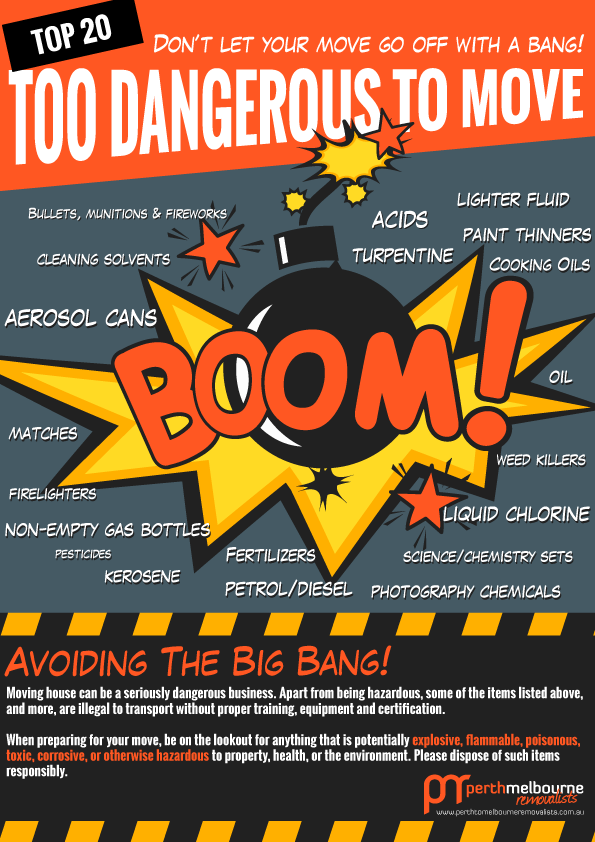Top 20: Too Dangerous to Move [infographic]
![Top 20: Too Dangerous to Move [infographic]](/blog/images/too-dangerous-to-move.png)
17-12-2015 01:00:24pm
Moving house can be a dangerous undertaking. Some regular, everday items can cause some serious damage. Here's our top 20 items that are simply too dangerous to move.
You are here: home > removalists blog > Top 20: Too Dangerous to Move [infographic]

Embed this infographic on your site
- Explosive;
- Flammable;
- Poisonous;
- Toxic;
- Corrosive;
- Or otherwise hazardous to property, health, or the environment.
Many items that you shouldn't pack when moving house are labelled with warning icons.
Unclear and Present Dangers
- In the lists above we have focused mainly on things that are volatile, explosive or noxious. You should also keep in mind when you're packing for your move that there are many other, seemingly inoquous items that can inflict injury or even cause death.
- Pay special attention to anything that is sharp. Ensure that sharp items are wrapped securely and won't perforate their packaging, resulting in injury or property damage.
- Don't overload your cartons or fill wardrobes and drawers. This could result in injury or property damage.
- Remove light bulbs from lamps and light fittings and pack them securely in boxes. Glass bulbs shatter easily and can cause serious cuts and damage to property.
- Ensure that mirrors, glass tables and other glass items are appropriately wrapped.
Quarantine
No article on 'what should not be moved' would be complete without mentioning biosecurity and quarantine regulations. Protecting the environment should always be a priority!
Every state has their own laws covering what can and cannot be transported interstate. Be sure to check with relevant authorities, or your furniture removalists, to see whether any quarantine laws may impact upon your move. Western Australia, for example, maintains strict regulations on the import of soil and other organic materials into the state. In this case, an 'Unaccompanied Personal Effects Declaration Form' must be completed and returned to your furniture removalists. Failure to follow the regulations can lead to hefty fines, seizure of goods, and recovery of the costs involved in cleaning contaminated items.
